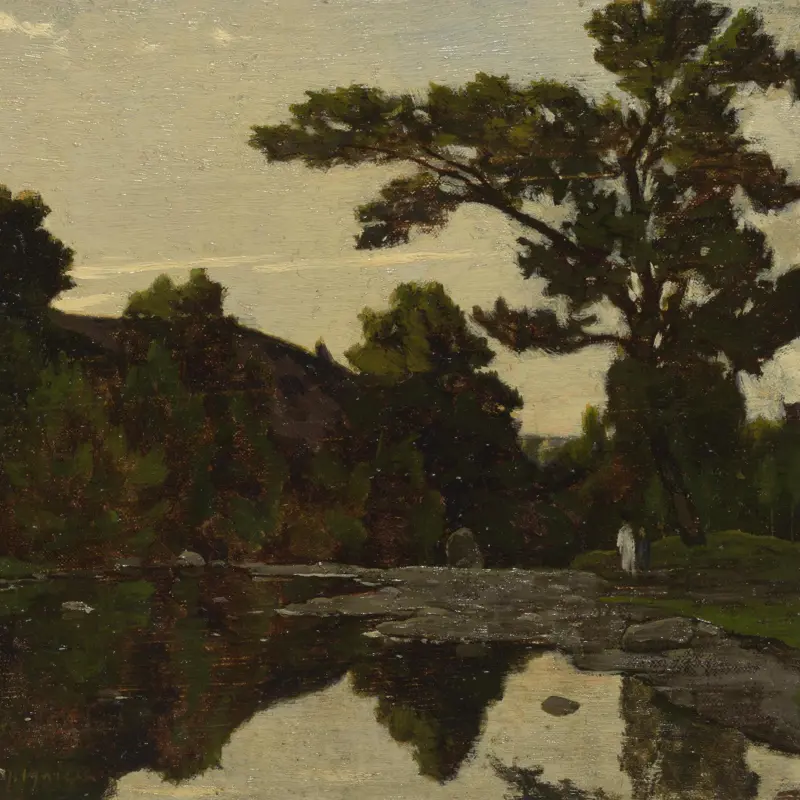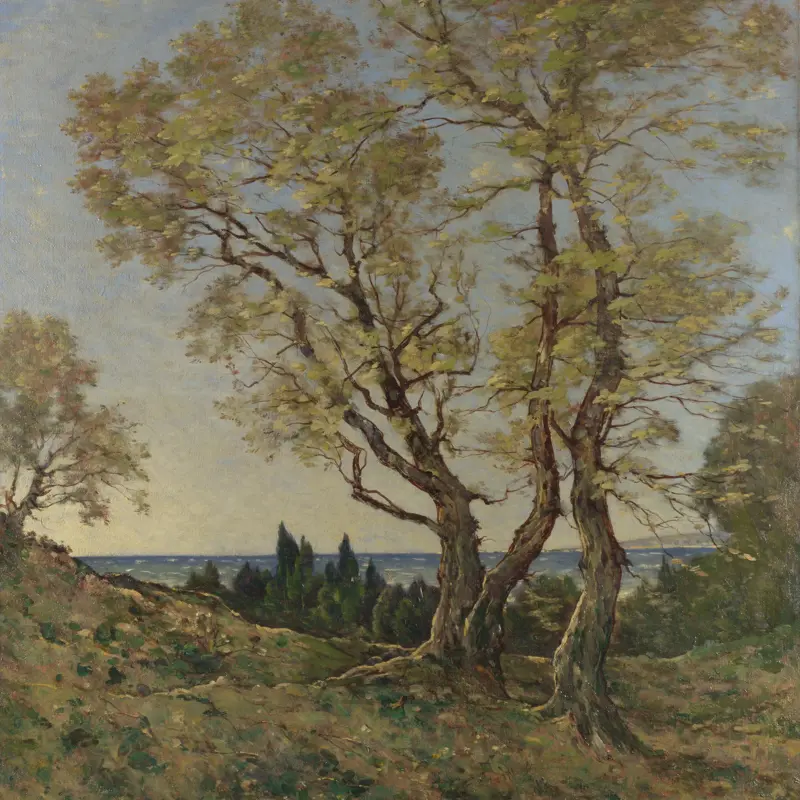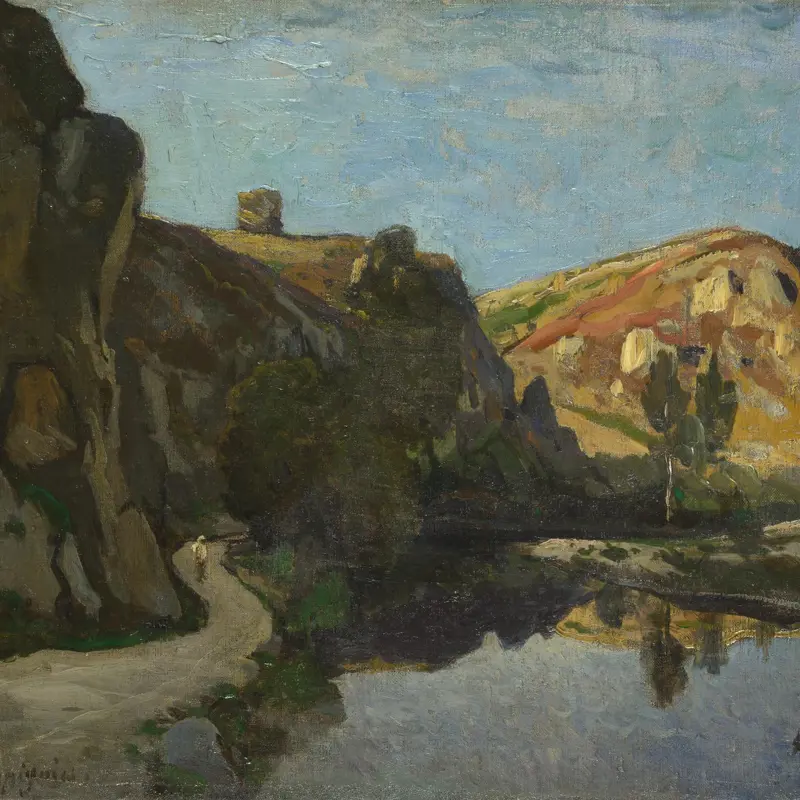Henri-Joseph Harpignies, 'The Painter's Garden at Saint-Privé', 1886
About the work
Overview
Henri-Joseph Harpignies' garden was clearly a great joy to him: it became one of his favourite subjects and he painted it many times, making sketches and watercolours as well as oil paintings. In this picture, painted a few years after he retired to the country, he has depicted the garden in great detail, from the plants and trees to the texture of old walls and flower pots.
Harpignies had retired to his property (La Trémellerie at Saint Privé on the banks of the river Loing, south-east of Paris) in about 1879. He kept a studio in Paris, but set up a second one in his garden, full of light and air. Students came to work with him there, and for many years he took them out on painting and sketching trips into the surrounding countryside. He continued to paint right up until his death in 1916.
Key facts
Details
- Full title
- The Painter's Garden at Saint-Privé
- Artist
- Henri-Joseph Harpignies
- Artist dates
- 1819 - 1916
- Date made
- 1886
- Medium and support
- oil on canvas
- Dimensions
- 59.7 × 81.3 cm
- Inscription summary
- Signed; Dated
- Acquisition credit
- Presented by H. Arthur Robinson in memory of Mrs R.H. Tripp, 1923; transferred from the Tate, 1956
- Inventory number
- NG1358
- Location
- Not on display
- Collection
- Main Collection
Provenance
Additional information
Text extracted from the ‘Provenance’ section of the catalogue entry in Martin Davies, with additions and some revisions by Cecil Gould, ‘National Gallery Catalogues: French School: Early 19th Century, Impressionists, Post-Impressionists, etc.’, London 1970; for further information, see the full catalogue entry.
Exhibition history
-
2010Impressionist GardensNational Gallery of Scotland31 July 2010 - 17 October 2010Fundación Caja Madrid16 November 2010 - 13 February 2011
Bibliography
-
1957Martin Davies, National Gallery Catalogues: French School, 2nd edn (revised), London 1957
-
1970Davies, Martin, and Cecil Gould, National Gallery Catalogues: French School: Early 19th Century, Impressionists, Post-Impressionists etc., London 1970
-
2001
C. Baker and T. Henry, The National Gallery: Complete Illustrated Catalogue, London 2001
About this record
If you know more about this work or have spotted an error, please contact us. Please note that exhibition histories are listed from 2009 onwards. Bibliographies may not be complete; more comprehensive information is available in the National Gallery Library.




